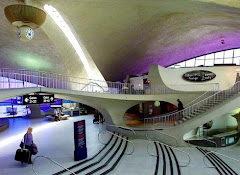
Are you and your firm thinking of transitioning from the static 2D environment to a more robust BIM model? Chances are you are thinking about and so are thousands of other firms out there. As I described the benefits earlier in an older post, click here, that is not where the issue lies. A lot of firms that do take the dive into BIM, execute it in a manner that is not feasible nor is it efficient on many fronts. In many instances, I describe this whole process as a construction site. A project is not completed all at once but rather different phases. Hence, deploying a program such as Revit is in many way like a site. It must be built up.
I have consulted, implemented, and advised many firms throughout the years and cannot tell you how many times firms will take it upon themselves to implement, train, and execute BIM into their office. Many cases end up as an architectural and planning abortion. More money is wasted through support issues alone.
For those of you who have just recently adopted BIM, I strongly adivse you to contact your reseller (Microdesk-some shameless promotion was coming :)), and I emplore you to hire consultants that have knowledge to do complete this daunting task. It is no longer a click and install procedure but rather it must be a methodical process.
1. Implement and deploy Revit in a manner which best suits your practice. Network or single deployment
2. Pick a small team, no more than 5-6 people who will advise the rest of the firm and will start with the pilot project.
3. ENROLL IN TRAINING COURSES. I can not stress this enough. So many people want to train themselves and in the end more issues arise. Trust me!
4. Work with consultants-Microdesk- we well be able to shadow and support you through the lifeline of the project, from napkin sketch to completion. We will be able to create standards as the initial project is created.
5. Once the project is complete, select another team(s) and repeat the process until the entire firm is up to speed. I would even send new hires to a training session each time. This will help instill the standards your firm has worked so hard to develop.

Friday, May 30, 2008
Incorporating BIM
Friday, May 16, 2008
Adobe Photoshop CS3 & The BIM Process
As you may have already ventured out into the rendering quality of the new Revit platform for '09, you will notice that the rendering engine as been upgrade. I posted an earlier blog about the benefits of the rendering and walkthrough capabilities within. So of you may use a render farm set up and others may render from many other various set ups. What I would like to introduce into the BIM workflow if you haven't tried yet, is the proficiency of Adobe Photoshop CS3. There are currently two versions out. I recommend the extended version for the AEC community. So many proposals, presentations, bids, et cetera go out with poor quality renderings. Photoshop CS3 extended allows a firm to conceptually display their design with highly realistic photos and media. It is easy to deploy, set up, and train, taking very little profit from your firm in the initial roll out. For more information on Photoshop, please click here Adobe Photoshop.








